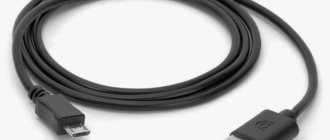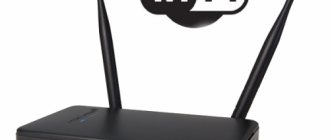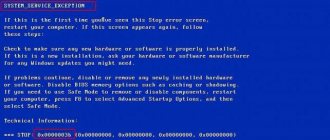Can I charge from another laptop?
Of course you can, but there are a couple of problems. First, we will need exactly the same computer in which our battery worked. And exactly the same - the same manufacturer, the same model. Even an outwardly similar battery with a similar connector will not only not work in a “foreign” beech, but will most likely fail itself or burn out the machine’s controller. Do you have many friends who have a similar device, and are also ready to conduct a similar experiment?
The second problem is that the computer, having received almost all the data about the installed energy source, may simply refuse to work with a “foreign” battery. In addition, the battery itself may make a similar decision, refusing to work with someone else’s car. This doesn't happen often, but it won't be an exception. Otherwise, we will either not be able to charge our battery, or we will get a new problem - a blocked battery controller.
Use a different battery
Another fail-safe option that has a right to exist is to buy a new one or find a charged battery of the desired model. But, firstly, a battery purchased for a lot of money will most likely not be fully charged; it still needs to be recharged somehow. And, secondly, such methods do not answer the question of how to charge the battery directly from a laptop.
Is it possible to charge a laptop battery without a charger?
If there is a need to restore the battery capacity without a charger, then you should be aware that any unprofessional intervention in any electronic component will automatically lead to termination of the manufacturer’s warranty.
Even if the integrity of the seals, labels and packaging are preserved, highly qualified specialists will be able to determine the cause of the laptop failure.
If the device is no longer under warranty or the research itch is so great that even the risk of losing a working device cannot be stopped, then you can use the recommendations outlined in this article.
The main rule when carrying out such manipulations with technically complex household appliances is to have average knowledge in the field of electronics and electrical engineering. Proficiency with a soldering iron and the necessary tools when performing such work is also mandatory.
All of the above recommendations do not matter if the charger fails during a business trip or travel. Moreover, when traveling outside the Russian Federation, many tourists will also not be able to charge the laptop even if they have an adapter.
Technically, it is possible to charge a laptop without a charger, but in practice it is extremely difficult to implement. If you need this because, for example, you forgot the charger at home and need to restore the capacity using improvised means, then you definitely won’t be able to do it.
After all, you will need to plug something from the socket into the connector of the device and convert the voltage from 220 volts to ~19.5 volts with a current strength of ~3 amperes. (You can find out more precisely by looking at the values on your battery)
Next, we will describe methods by which you can charge a laptop without a charger and you will understand how difficult it is.
Special charger
The following is an absolutely safe method, but the problem here is that you will have to buy a proper device to charge our type of battery. It costs a lot, but finding what you need is not easy. Consists of an adapter and a cable with a plug that matches the socket of our battery. We connect, guided by the LED indicator on the adapter, and charge our battery.
What are the main difficulties?
The main difficulty when trying to charge a laptop battery directly is the inability to properly connect the contacts of the charger to the battery terminals. When making a charger yourself, it is very difficult to set the required voltage and current values.
When using a standard charger, difficulties also arise. The charger plug cannot be connected directly to the batteries; however, an attempt to solder the wires directly to the plus and minus connectors will render the product unusable.
Many laptop battery models may not have terminal markings, so it can be very difficult to connect the wires while maintaining correct polarity.
In general, there are many difficulties when trying to charge a laptop battery without a laptop, but with the right approach to solving the problem, you can perform this operation without compromising the performance of the charger and laptop computer.
Directly from the power supply
Now we have come to the most unsafe method, but it most fully corresponds to the topic of the article and is ideal for extreme sports enthusiasts. To work, we need a multimeter, a power source, and a current-limiting resistor. We can adapt any multimeter capable of measuring DC voltages up to 20 V.
Power unit. A good option is a standard laptop charger whose battery we are going to charge. As an alternative, any stabilized energy source with an output voltage 1–5 V higher than the output voltage of a fully charged battery, capable of delivering a current of at least 2 A to the load. The operating voltage is usually indicated on the battery case.
For the battery shown in the photo above, you will need a power supply with an output voltage of 12–16 V. If we use a power supply for a laptop (not necessarily ours), then its output voltage and current can be read on the case.
Now the current limiting resistor. Its rating and power will depend on the output voltages of the battery and power supply. Suppose we have an 11.1 V battery and a 12 V unit. We will charge with an initial current of 1.5 A. This is not much, but it is the safest for the battery, although the process will take longer. We calculate the voltage that should drop across the resistor. In this case, we take the battery voltage to be 10.2 V (completely discharged). 12 – 10.2 = 1.8 V. Using Ohm’s formula, we calculate the resistance of the resistor based on the charging current of 1.5 A. R = U: I = 1.8: 1.5 = 1.2 Ohm. It remains to calculate the power dissipated by the resistor. P = U x I = 1.8 x 1.4 = 2.7 W.
Such a resistor can be removed from switching power supplies for TVs, but if this is a problem, it will be replaced by a car high beam lamp with a power of 45–55 W.
All that remains is to assemble the circuit and start charging, but first let’s look at the laptop’s power supply connector. It can be two- or three-pin. In a two-contact, tube-shaped type, the internal contact is “plus”, the external one is “minus”.
Expert opinion
Alexey Bartosh
Specialist in repair and maintenance of electrical equipment and industrial electronics.
Ask a Question
Important! It is extremely rare, but there are power supplies in which the plug is connected in reverse - “plus” on the outside, “minus” on the inside. Therefore, to accurately determine the polarity, we use a tester in voltmeter mode or check the information printed on the adapter body. Otherwise, we risk burning out the battery controller.
The pinout of the plug is often indicated on the adapter body
Now there are three-pin plugs for connecting electrical units. Their pinout is the same, but inside the tube there will be a third contact in the form of a thin pin. This is an information output that indicates to the laptop that the power supply is connected to it and voltage is coming from it.
Now let's move on to the circuit that we will have to assemble. It is relatively simple, the main thing is not to confuse the polarity of connecting the power supply to the battery.
A circuit that allows you to charge the battery without a laptop
So, using a multimeter or using a battery diagram, we find the main power buses and their polarity. If the battery has a control input, then we find out where it is and what needs to be supplied to it (see above).
We connect two wires to the plug of the unit. If the power supply is standard, then it will be convenient to use the appropriate outlet.
If there is no socket, then you can connect in an easier way - insert the positive wire inside the plug tube, wrap the negative wire around the tube and secure everything with electrical tape.
We connect the positive wire through a quenching resistor (lamp) to the positive input/output of the battery, and the negative wire to the negative one. We carefully monitor the polarity.
In parallel, connect a voltmeter (tester) to the battery power terminals (not the power supply!). We turn on the power supply and start charging, constantly monitoring the voltage and temperature of the battery pack. The voltage will begin to gradually increase, approaching the rated voltage of the battery. As soon as it exceeds the nominal value by 0.3–0.4 V, we stop charging.
Let the battery not reach 100% charge, but if the process is not stopped, then particularly “severe” types of controllers may become locked, from which it will be impossible to get out without special equipment and knowledge. We disconnect the power supply from the network, disassemble the circuit, and we can assume that the battery is charged.
Important! If the battery temperature rises noticeably, stop charging immediately. Otherwise, the batteries may catch fire or explode. Here you can’t do without a fire extinguisher and, possibly, an ambulance.
Alternative laptop charging options
There are safer alternative options for charging your laptop. You can restore the charge using an adapter from a car cigarette lighter, a Power Bank, or a solar charger.
You just need to prepare in advance for such a situation and purchase a second charger in advance and leave it at work. Throw a Power Bank, dynamo or solar charger into your travel suitcase. Purchase a cigarette lighter charger for your car.
Charging from the cigarette lighter
This device will not only restore battery charge, but also allow you to use your laptop during long car trips. Even if you don’t have a car, you can use this device if you purchase a small 12 V battery and a cigarette lighter socket, the contacts of which should be connected to the corresponding battery terminals.
Through a special Power Bank
Such a backup power source is simply irreplaceable on a business trip. The capacity of such devices can be more than 10 times the rated capacity of the internal battery. Power Bank is lightweight and small in size, so there are no difficulties when transporting such products.
Solar Charger
Such a power source for a laptop will come in handy during long trips to the forest or fishing. The only condition for the normal operation of such a device is sunny weather.
Any of the listed devices will make it easy to do without a laptop charger. The only disadvantage of such devices is the need to purchase them in advance.
What voltage and current should I set when using a laboratory power supply?
Previously, we determined that any energy source that provides a current of about 2 A and a voltage 1–5 V higher than the voltage of the charged battery is suitable for charging a laptop battery. A laboratory power supply is very convenient in this regard. It allows you not only to regulate the charging current without any current-limiting resistors, but also to set the final charging voltage. This frees us from constantly monitoring the voltage at the battery terminals. We set the voltage to 0.3–0.4 V higher than the operating voltage of the battery, the current is about 1.0–1.5 A, and charge it quietly.
Important! Even using such an automatic “charger”, it is necessary to constantly monitor the temperature of the battery.
Don't forget to check
To check again, you should use the tester. We connect the tester to the contacts of the power supply, poke them into the contacts of the battery. If the voltage at the contacts of the power supply drops to a value close to the battery voltage, then we can talk about the charging process taking place.
Checking laptop battery testers
We looked at effective and affordable charging principles without the computer itself. But it is important to remember that such measures are only available for reliable batteries from well-known manufacturers. Often Chinese analogues are not equipped with appropriate protection, so it’s not worth the risk.
We hope that such unpleasant situations will not arise in your life with the need for an urgent charge without a laptop. Although, if necessary, you can use our recommendations - the most reliable and safe approach, tested in practice.
The best option for frequent and long business trips and trips is to bet on computer models with a long charge and a sufficiently capacious battery. And if necessary, buy and take spare batteries with you - in most cases, this is enough to spend 10 hours on the road, staying connected, solving your household or work problems if necessary.











